Well, Meron and Tsedey have done it...they completed their year-long senior project and recently topped it off with a final demo and presentation. I must say how impressed I am at the amount the girls learned and with their dedication to see this project through. There were a lot of twists and turns in the project that could have easily been discouraging. For the past few months, I’ve been working with high school senior girls, Meron Shiferaw and Tsedey Tadesse, at Roosevelt High School in Seattle on a collaborative, cross-disciplinary project. The project introduces the young women to both technology and fashion and how to merge them into a new experience in the shape of an interactive gown. The project had its roots in a course Meron took at Roosevelt HS last year — Introduction to Computer Science. That course, taught by Andrew Davidson, introduced students to the basics of computer science and engineering. During this project, they completed 6 phases that taught them interaction design, basic electronics, intro to eTextiles, basic programming, fashion design and fashion construction.
Their project concept uses technology to push the boundaries of traditional Ethiopian wedding gowns. The interaction takes the participant through a playful story of the modernization of traditional Ethiopian wedding gowns that started with handmade gowns with a single ornate pattern around the bottom edge and slowly became more ornate and shorter in length through the generations.
Here's how the project turned out...
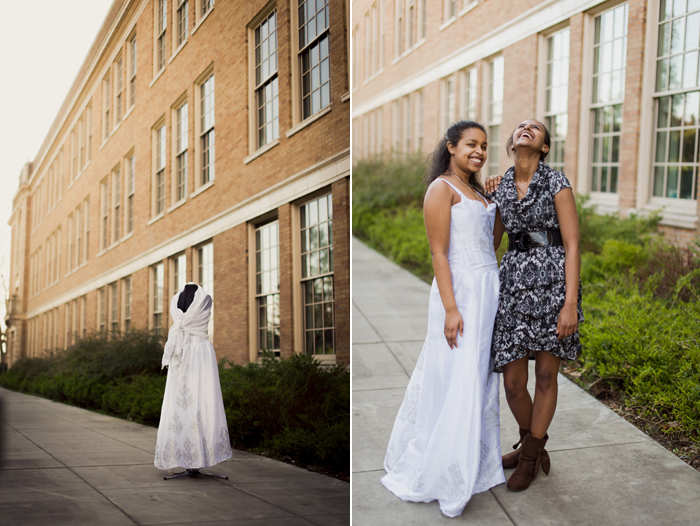
At one point of the project, Tsedey took a trip to Ethiopia and purchased hand-made traditional wedding gown fabric for the project. Each floral pattern in the fabric was used to diffuse the LEDs that were embedded in an inner lining.
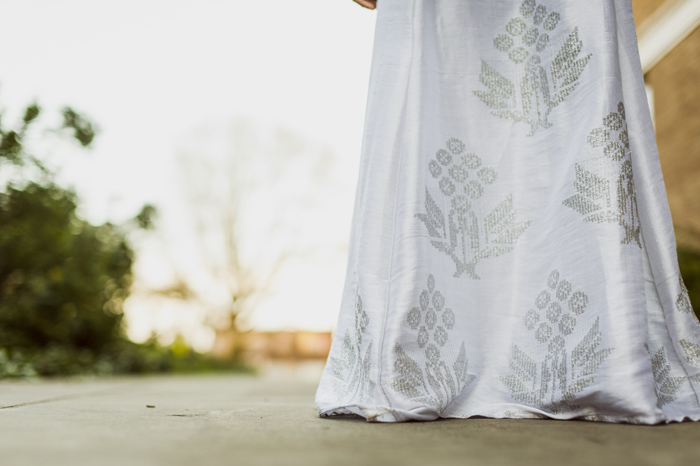
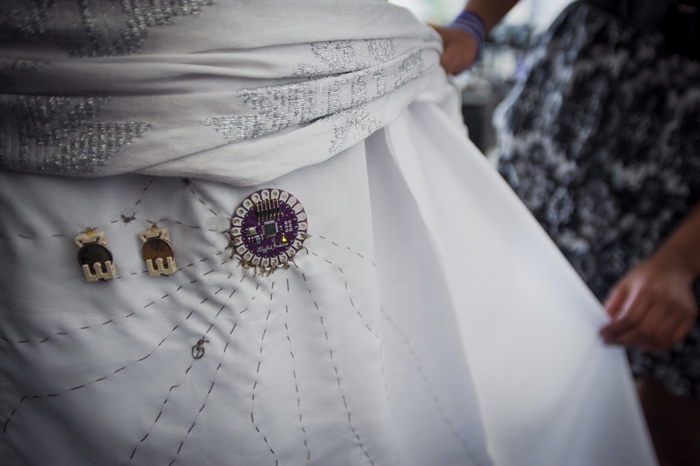
The transition and animation of the LEDs told the story of the modernization of traditional ethiopian wedding gowns.
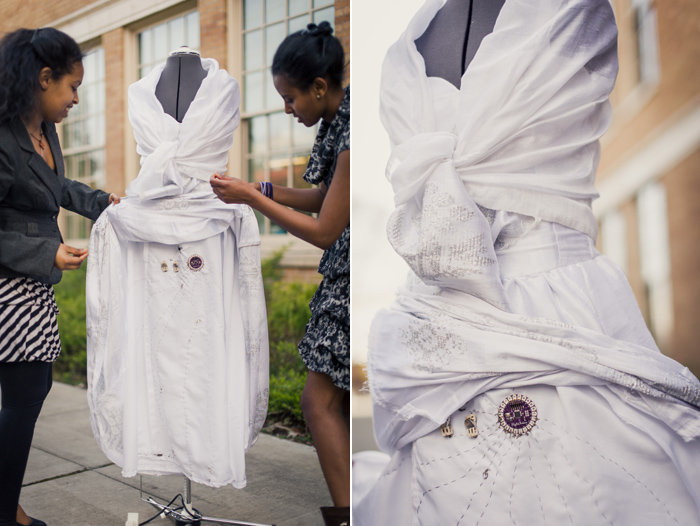
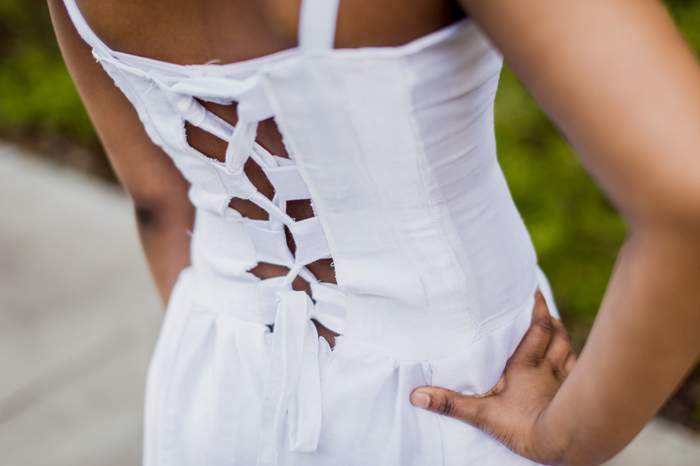
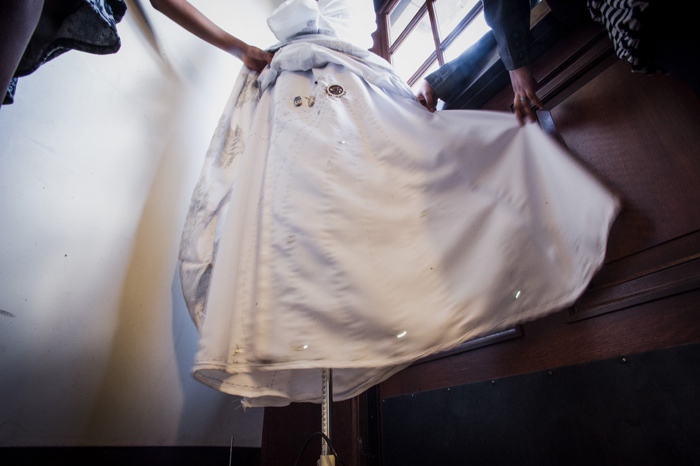
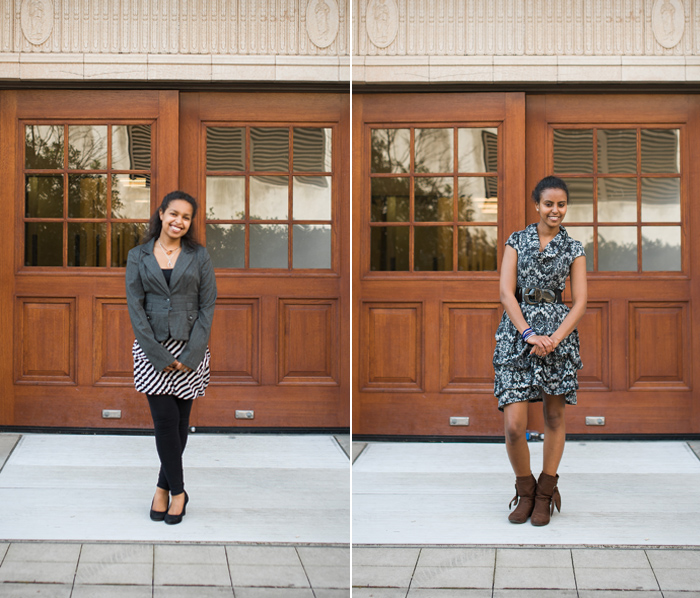 Meron Shiferaw (left) and Tsedey Tadesse (right)
Meron Shiferaw (left) and Tsedey Tadesse (right)
For more info on the girls' process, go to part 1 to see how they got started and part 2 to see the hurdles that they had to overcome.
Special thanks to Kevin Wong Photography who took the gorgeous final photos of the project.


